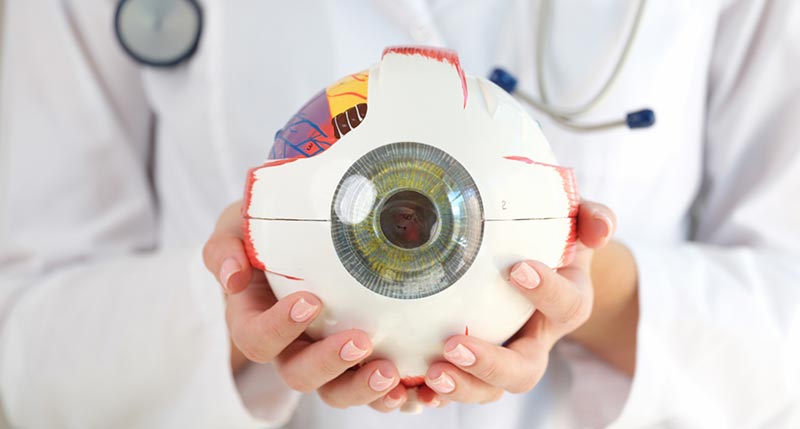The Pros and Cons of Different Refractive Surgical Treatments for Enhanced Eyecare

LASIK Surgical Treatment
LASIK surgical procedure is a commonly carried out refractive treatment that intends to correct vision issues such as astigmatism, nearsightedness, and farsightedness. This surgical method has gotten appeal because of its efficiency in supplying individuals with more clear vision and lowering their reliance on glasses or call lenses. During the procedure, a slim flap is created on the cornea, and a laser is made use of to improve the underlying cells, remedying the refractive error. The flap is then repositioned, permitting quick healing and minimal discomfort for the client.
One of the key benefits of LASIK surgical treatment is the quick improvement in vision experienced by many individuals. It is essential for individuals thinking about LASIK surgery to undertake a thorough examination by an eye treatment specialist to identify if they are ideal prospects for the procedure.
PRK Procedure
The PRK treatment, also known as Photorefractive Keratectomy, is a kind of refractive surgery that intends to deal with vision concerns comparable to LASIK surgical treatment. Unlike LASIK, which entails developing a flap in the cornea, PRK functions on the surface area layer of the cornea.
One of the benefits of PRK over LASIK is that it gets rid of the threat of flap-related issues considering that no flap is created throughout the surgical treatment. In spite of the longer healing period, PRK can be an ideal choice for people seeking vision improvement surgical procedure.
SMILE Surgery
A cutting-edge refractive surgical treatment technique obtaining appeal in the area of ophthalmology is SMILE Surgical treatment. Tiny Cut Lenticule Extraction (SMILE) is a minimally intrusive treatment that fixes vision by improving the cornea utilizing a femtosecond laser. Unlike conventional LASIK surgery, SMILE Surgical treatment entails creating a small cut in the cornea to remove a lenticule, which results in less disruption to the corneal framework and potentially quicker recovery times.
One of the primary benefits of SMILE Surgery is its capability to deal with nearsightedness (nearsightedness) and astigmatism with high precision, bring about outstanding visual end results for people. The minimally invasive nature of the procedure also minimizes the danger of difficulties such as completely dry eye disorder, making it a favorable option for people seeking refractive surgical treatment.

LASEK Method
Having actually checked out the advantages and considerations of SMILE Surgery, another notable refractive surgical treatment method worth taking a look at is the LASEK Strategy. LASEK, which represents Laser-Assisted Subepithelial Keratectomy, is a kind of laser eye surgery that aims to fix refractive errors such as myopia (nearsightedness), hyperopia (farsightedness), and astigmatism.
Unlike LASIK, LASEK does not involve creating a corneal flap. Rather, throughout a LASEK procedure, the surgeon utilizes a diluted alcohol solution to loosen up the thin outer layer of the cornea, understood as the epithelium.
One of the primary benefits of LASEK is that it can be ideal for individuals with slim corneas who might not eye doctors in andalusia be good prospects for LASIK. Furthermore, LASEK generally causes very little post-operative pain and a quicker recuperation time compared to PRK. The visual healing process with LASEK may be a little longer than with LASIK.
Implantable Contact Lenses
Implantable Contact Lenses provide a lasting vision adjustment remedy for individuals looking for a choice to conventional call lenses or glasses. These lenses, also understood as phakic intraocular lenses, are operatively inserted into the eye to deal with refractive errors such as myopia (nearsightedness), hyperopia (farsightedness), and astigmatism. cardiologist andalusia. Unlike typical call lenses that sit on the surface of the eye, implantable call lenses function within the eye itself, offering clear vision without the requirement for day-to-day maintenance or removal
One of the vital benefits of implantable contact lenses is their permanence. When inserted, they can stay in the eye forever, offering steady and constant vision correction. Additionally, these lenses can be an outstanding choice for people who are not great prospects for laser eye surgical procedure or that favor a relatively easy to fix vision improvement treatment.
However, implantable contact lenses do bring some dangers, including the potential for cataracts or enhanced eye pressure. It is vital for individuals considering this choice to speak with an eye care professional to establish if implantable get in touch with lenses are the ideal choice for their specific requirements and eye wellness.
Verdict
In conclusion, each kind of refractive surgery has its very own advantages and downsides. LASIK surgical treatment is popular for its quick recovery time, while PRK procedure may be appropriate for clients with slim corneas.

In General, SMILE Surgical procedure presents an encouraging option for people looking to enhance their vision with refractive surgical procedure.